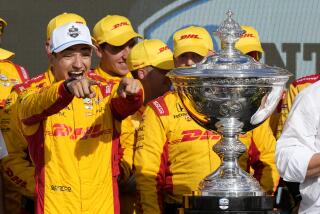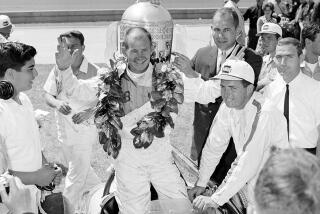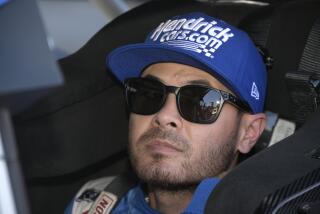MORNING BRIEFING
- Share via
One of my first assignments as a NASCAR reporter was to compile a series of quotes about what’s more important to stock car racing -- the car or the driver?
I asked every driver I could find at Daytona’s 2008 media day what they thought, and the results were mixed.
At the time, most assumed the car and driver had equal parts to do with a team’s success. At super speedways equipment played a bigger factor, but everywhere else it was a toss-up.
But drivers hadn’t run a full season with the Car of Tomorrow yet, so they based their answers on previous experience and data.
If this season’s results, combined with last season’s first full year with the COT, have taught us anything, it’s that these days the argument leans heavily one way.
NASCAR’s current car has made the driver the most important factor for any race team. Drivers make the biggest difference.
Throughout 2008, drivers were very confused about this. The new car was hard to drive and drivers didn’t take to it quickly. Some felt helpless to change that because it just didn’t make sense. This was not what they’d been racing most of their careers.
So they gave the credit (and consequently the blame) to their teams.
Drivers assumed that because they didn’t feel in control, the crew chiefs must have been to blame, never considering the possibility that nobody was at fault.
“I’ve got to attribute a lot of success that anyone would have this year in this car to the crew chiefs,” Dale Earnhardt Jr. said last fall in Richmond, “what they’ve figured out, and the engineering departments and what they’ve learned and how they’re applying it to the race cars.” In reality, the Car of Tomorrow narrowed the rules for engineers and crew chiefs. There are very few adjustments they can make.
Today the crew chief’s power is more about pit strategy, decision-making and dealing well with his driver over the radio.
With the whole field driving the uncooperative car for all of 2008, Kyle Busch became a star. He did change teams, but went from one superpower to another, so better equipment couldn’t explain the change.
No, the truth was Busch was just better at forcing a car to do what he wanted it to do. In Atlanta, when all the rest of the drivers shrieked that the tires made the cars undriveable, Busch worked his car to Toyota’s first NASCAR win. At the repaved Darlington, when drivers were going faster than they knew how to handle, Busch won his third race of the season.
He hates this car, but he keeps winning with it. Busch already has won twice, despite still disliking this car. Carl Edwards and Jimmie Johnson were two more guys capable of taming the ill-handling car. Edwards utilized physical strength and his prowess with difficult race cars. Johnson relied on an analytical precision few drivers possess.
This season’s results further prove the point.
If the quality of the car were the most important factor, Joey Logano would be coasting through his rookie season. He did it in the Nationwide Series. Instead, Logano is struggling on what is essentially the same team with which Tony Stewart made the Chase last year.
Stewart, meanwhile, is running almost exactly as he did last year in his brand-new No. 14 Stewart-Haas Racing car.
Suddenly the No. 5 car, which Casey Mears drove to a 20th-place finish last year, looks like a contender. If it weren’t for engine failures early on, Mark Martin, who drives the No. 5 now, would easily be in the top 10 in points.
Mears, with an 07 race team that made last year’s Chase, is currently 23rd in point races with it. Clint Bowyer, who left the 07 for the brand-new No. 33 car, is flourishing.
Whatever impact equipment had on racers of years past has shrunk. It’s the driver who turns bad days into good ones and the driver who turns good ones into wins.
--
More to Read
Go beyond the scoreboard
Get the latest on L.A.'s teams in the daily Sports Report newsletter.
You may occasionally receive promotional content from the Los Angeles Times.











